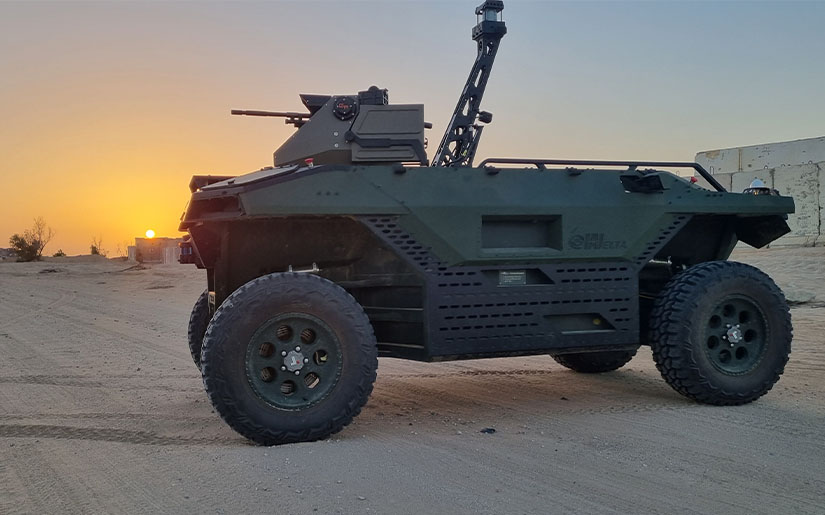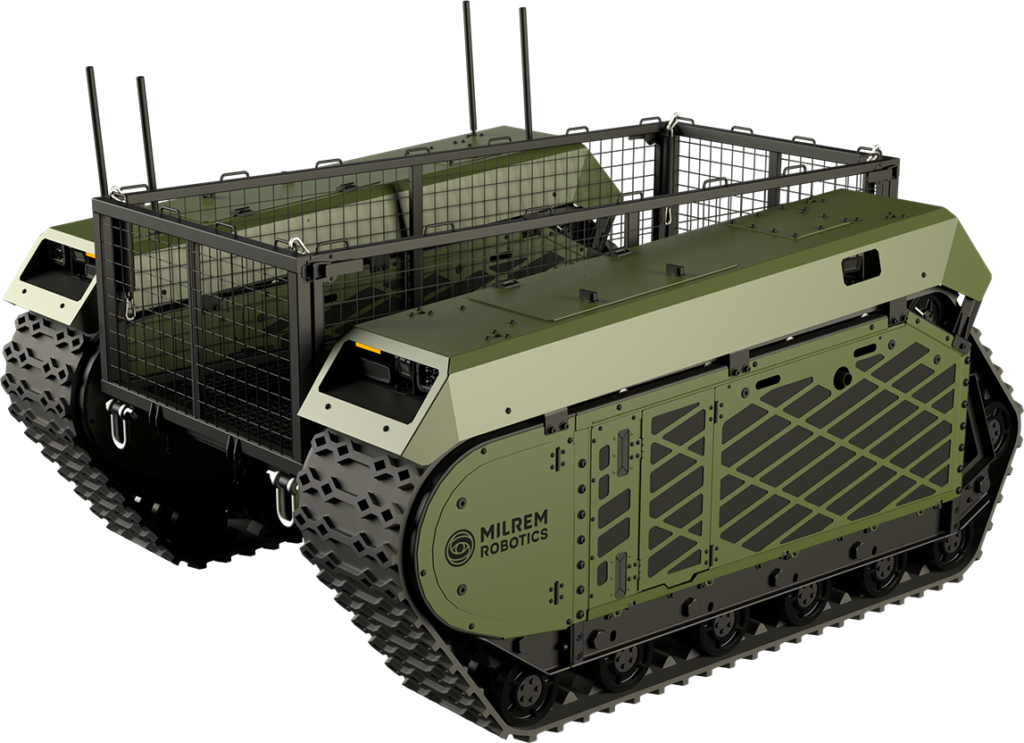As we discuss in our ongoing 3D Printing Drone Swarms series, additive manufacturing (AM) will play an increasing role in the production of all manner of semi-sentient robots. This has been demonstrated by unmanned aerial vehicles (UAVs), which are now being made in part with 3D printing for lightweight, custom designs. For this reason, we expect AM to be used for other drone-style bots as well, often for military purposes.
In this series, we’ve been looking at 3D printed unmanned aerial vehicles (UAVs) and how they will impact modern warfare. Previously, we’ve considered air logistics for the military, but this is not the only area where autonomous 3D printed vehicles will play a role. Many unmanned ground vehicles are currently under development. Some are piloted remotely from a station in a safe location, while others are being developed as autonomous vehicles. In either case, 3D printing will play a role. There is also a third type of vehicle which the US Army is in-and-out-of-love with: the “robotic mule.”
First touted and released in 2014, the robotic mule project was long moribund. Now, the military is looking at it yet again. The creature follows soldiers, guided using a tracker or operated like an RC car. So, it’s not as expensive as a completely autonomous robot, but it doesn’t need an operator either. The initial Small Multipurpose Equipment Transport program behind the mule met some issues, but the U.S. Army wants to invest in R&D for newer versions once more.

The GDLS MUTT
It’s important to note that just because we have artificial intelligence (AI) and, perhaps, will have autonomous cars, these may not be the best solutions for the military. Indeed, an optionally manned and optionally driven vehicle that is a large, line-following robot may actually do the trick better than expensive kit. Another approach is Milrem’s THeMIS. This is meant to be a Willy’s Jeep of a robot. So, rather than having a very defined role, THeMIS is a platform that can be converted into a weapon on a transport robot.

IAI’s Rex carries a one-tonne payload. It can be operated remotely, follow you, or be autonomous.

There are other ways of thinking, however, with Lockheed’s CAST system turning a regular truck into one that follows another so that its driver can return fire. One other approach is to repurpose existing vehicles. Russia has taken the BTR 90, an armored personnel carrier in use since 1994, and given it a hybrid engine and a autonomous driving kit. It could be very advantageous for armies to update obsolete equipment and then give it a renewed life as an expendable, autonomous transport vehicle. This could be very inexpensive.
Autonomous sea transport is a potentially huge opportunity, as well. USV Sea-Kit Maxlimer, from U.K.-based company Sea Kit, had an autonomous sea vehicle transit the busy English Channel in 2019. Maritime autonomous surface ships are a significant area of interest for the shipping industry, too. Yara and KONGSBERG are developing an autonomous transport ship which should also be emissions-free.
There are tens of thousands of shipbuilders worldwide and they could all make boats that are partially autonomous through L3 Harris’s control systems. ASView can be a great enabler and urge more companies into making these craft. The software was first released in 2008 and is used on over a 100 ships today.
In oil and gas, and especially in subsea, there are a lot of tasks that could benefit from unmanned vehicles. Unmanned craft are already under development for things such as pipeline inspection, surveying, sampling, monitoring, and more. Anything monotonous and costly is being looked at for different classes of vehicles. Some are tiny, inexpensive and, in effect, disposable, while others are complex and large. At all scales these kinds of craft are being introduced in the market.
It would seem initially, at least, that many businesses are developing niche or customized solutions suited to the task. Based on tenders or awards many vehicles will indeed be very specific too the needs of that unit or request. Especially in maritime, we’re seeing a lot of smart development using existing kit and sharing components while working together. This kind of collaboration bodes well for future developments.
Subscribe to Our Email Newsletter
Stay up-to-date on all the latest news from the 3D printing industry and receive information and offers from third party vendors.
You May Also Like
3D Printing Unpeeled: New Arkema Material for HP, Saddle and Macro MEMS
A new Arkema material for MJF is said to reduce costs per part by up to 25% and have an 85% reusability ratio. HP 3D HR PA 12 S has been...
3D Printing News Briefs, January 20, 2024: FDM, LPBF, Underwater 3D Printer, Racing, & More
We’re starting off with a process certification in today’s 3D Printing News Briefs, and then moving on to research about solute trapping, laser powder bed fusion, and then moving on...
3D Printing Webinar and Event Roundup: December 3, 2023
We’ve got plenty of events and webinars coming up for you this week! Quickparts is having a Manufacturing Roadshow, America Makes is holding a Member Town Hall, Stratafest makes two...
Formnext 2023 Day Three: Slam Dunk
I’m high—high on trade show. I’ve met numerous new faces and reconnected with old friends, creating an absolutely wonderful atmosphere. The excitement is palpable over several emerging developments. The high...































